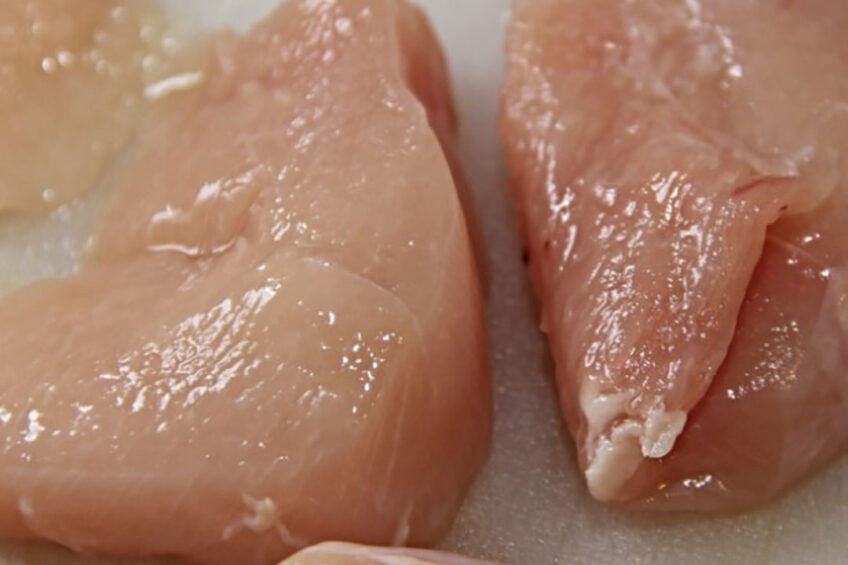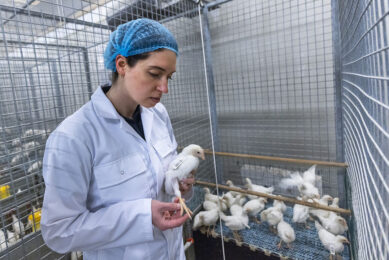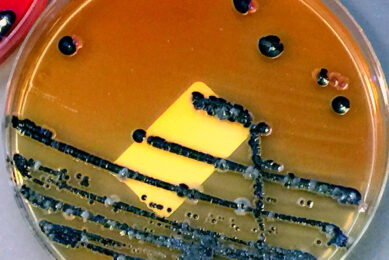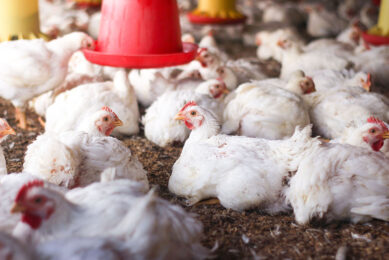USDA aims to reduce salmonella illnesses linked to poultry

The US Department of Agriculture’s Food Safety and Inspection Service is “mobilising a stronger and more comprehensive effort to reduce salmonella illnesses associated with poultry products”.
“We’re taking action to help prevent salmonella contamination throughout the poultry supply chain and production system to protect public health,” said US agriculture secretary, Tom Vilsack. This action, says the USDA, will assist in moving closer to the national target of a 25% reduction in salmonella illnesses.
Despite the occurrence of salmonella in poultry products consistently reducing over recent years, poultry is linked to about 23% of the 1.35 million salmonella infections in the US each year, resulting in around 26,500 hospitalisations and 420 deaths, reports the Associated Press (AP). The USDA intends to seek stakeholder feedback on specific salmonella control and measurement strategies, including pilot projects in poultry slaughter and processing establishments.
Reducing salmonella from entering the slaughterhouse
A key component of this approach, it says, is reducing salmonella contamination coming into the slaughterhouse. AP noted one of the proposed pilot projects would add tests for the quantity of bacteria present and tests for the specific strains of salmonella that cause the most illnesses. Furthermore, it says that the USDA aims to encourage farmers to using more vaccinations, add probiotics to feed and do more to ensure that the birds’ bedding, food and water remain clean in order to help reduce bacteria in their chickens.
Poultry probiotic to prevent salmonella infection
The first study on probiotic spray application on eggs to reduce salmonella in hatchlings will soon begin at the University of Connecticut in the US. Read more…
Coalition for Poultry Safety Reform: The current system is broken
Members of the Coalition for Poultry Safety Reform welcome these efforts. “The rates of illness in the US due to salmonella and campylobacter have remained persistently high for the last 20 years, despite efforts by federal regulators aimed at reducing bacterial contamination in poultry products,” it noted in a statement. The coalition added that it would advocate for a full upgrade of the current regulatory system, saying that “the current system for regulating poultry safety is broken”.
It also believes that the USDA must invite innovation and technological developments, that food safety should extend from raw material to finished packaging, that campylobacter also needs to be included, and that there needs to be investment in research.
National Chicken Council: Consumer education essential
The National Chicken Council (NCC) noted that even with very low levels of pathogens, there is still the possibility of illness if a raw product is improperly handled or cooked. “Increased consumer education about proper handling and cooking of raw meat must be part of any framework moving forward,” the NCC stated, adding that all bacteria potentially found on raw chicken, regardless of strain, are fully destroyed by proper handling and cooking.
NCC senior VP of scientific and regulatory affairs, Ashley Peterson, said that while it supports modernisation, ongoing research, innovation and technology development, poultry companies invest tens of millions of dollars each year to enhance the safety of chicken products. Continuous inspection and testing have demonstrated the long-term success of these interventions in providing a safe, wholesome and affordable protein for consumers, said Peterson.
National Turkey Federation: no simple solution
President of the National Turkey Federation, Joel Brandenberger, said that because there are no simple solutions, improving food safety requires the type of collaborative approach USDA is advocating, reports AP.
New Zealand tightens salmonella controls
Meanwhile, Food Safety News reports that regulators in New Zealand have also tightened the rules for the chicken sector to try and tackle a type of salmonella linked to human illnesses to manage salmonella across chicken breeder, hatchery, rearers, broiler, and egg laying operations.
Join 31,000+ subscribers
Subscribe to our newsletter to stay updated about all the need-to-know content in the poultry sector, three times a week. Beheer
Beheer








 WP Admin
WP Admin  Bewerk bericht
Bewerk bericht